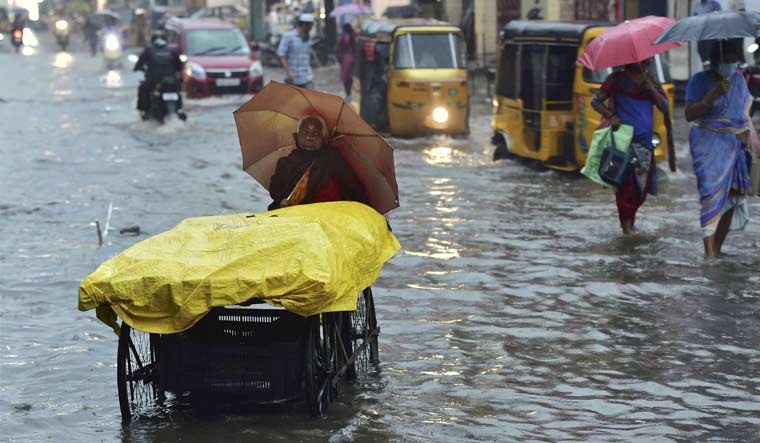On Wednesday, as the Nivar cyclone was on its course to make landfall near Puducherry, Tamil Nadu Chief Minister Edappadi K. Palaniswami was on field, working for the people of his state.
As the rains intensified, Palaniswami’s convoy set out all the way to the Chembarambakkam lake to take stock of the situation as water from the lake was to be released into the Adyar river. The same Chembarambakkam lake, on the outskirts of the Chennai city, was the major reason behind the flash floods of 2015. When Palaniswami went all the way to Chembarambakkam, Chennaiites were relieved that the chief minister was actively involved to ensure people's welfare.
But the chief minister, who is also the minister for Public Works Department (PWD), seems to have failed to ask his own officials if the lake was desilted in recent years to avoid any overflow. The department officials also did not tell him if the lake had reached its full capacity just because of heavy rains.
According to highly placed sources in the PWD, all the four reservoirs around Chennai, including Red Hills, Poondi, Cholavaram and Chembarambakkam have not been desilted in the last five years. According to the department protocol, desilting is mandatory once in five years. The Chembarambakkam lake was not desilted as per the protocol, though a detailed plan was devised, tenders were called for and the cost was also worked out. Rs 36 crore was the budget estimated to desilt Chembarambakkam and three other reservoirs on the outskirts of Chennai. But the project that was supposed to begin in 2019 got delayed and was pushed to 2020 summer. But as the pandemic struck, there was no one at work to clear the silt.
Sources in the PWD say that the project as planned was supposed to bring in huge profits to the government as the silt itself would generate around Rs 200 crore. Had it been dug properly as planned in 2019, the desilting would have increased the lake’s capacity to fill in at least 550 mcft more water, during rains. “Yes, the lake is filled with silt. If we had desilted, the capacity would have been a little higher. The plan in 2019 was to remove 150 lakh cubic metres of silt,” tells a senior official at the PWD on conditions of anonymity. Apart from removing silt, he says, the department could not deepen the lake and had this happened on time, the lake’s capacity would have increased.
“As per the rule book, a silt survey to find the quantum and quality of the silt has to be done at least once in five years. The reservoir could have been desilted in 2019 when we faced water shortage and the reservoir was almost dry,” says S. Thirunavukkarasu, former PWD assistant executive engineer.
The sluice gates of the Chembarambakkam lake--which is one of the sources of drinking water for Chennai--were opened after a gap of five years. The shutters were opened as a precautionary measure to avoid flooding like in 2015 and inundation close to banks of Adyar river bank. The water release from the lake was gradually increased from 1,000 cusecs in the noon on Wednesday to 7,000 cusecs later in the night when Nivar cyclone brought intense rains. This was to maintain the water level at 21.98 feet as against its total capacity of 24 feet.
The lake’s capacity, though, is 3,645 million cubic feet (mcft), the storage stood at 3,115 mcft. The Water Resources Department, according to the officials, took this precautionary measure as the reservoir was already receiving heavy inflow from the Krishna river and also 10tmcft of rainwater as it is a catchment area.







